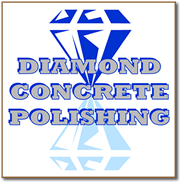 POLISHED CONCRETE
CARE & MAINTENANCE
POLISHED CONCRETE
CARE & MAINTENANCE
A Specialty Council of the AMERICAN SOCIETY OF CONCRETE CONTRACTORS
Download PDF File 
With proper maintenance, the life cycle cost of polished concrete makes it one of the most affordable flooring systems. Polished concrete is created with mechanical processing combined with a reactive densification process and optional stain guard application. These steps are what greatly increase maintenance costs, but are often forgotten when pricing a flooring system.
Polished concrete does require upkeep. The amount and type of traffic com- bined with the amount and type of dirt and contaminants will determine the maintenance needed. Working with your installation contractor on a maintenance plan will extend the life of your floor, increasing durability and stain resis- tance. The plan outlined on the follow- ing pages is a baseline strategy to make the most of your flooring investment.

Construction Phase:
Construction often continues on a building after the concrete has been polished. It is imperative for the floor to be protected from spills, especially oils, during this time. There are many types of protection available, from paper and cardboard to liquid membranes that can be used 24 hours after final sealer application. The pro- tection must be compatible with polished concrete and made for this purpose, as some systems can cause additional problems. Tape should not be adhered directly to the floor during this period.
Contaminants and threats that can affect your polishedconcrete floor:
- Incorrect Cleaning Chemicals: Many cleaners used on other types of floors (vinyl or hardwood) can cause damage to a polished concrete surface. Verify that your cleaning chemicals are compatible with polished concrete.
- Salt: All concrete surfaces are damaged by salt. Salt residue cannot be left on the surface without long term damage occurring.
- Acid: Acids etch concrete. Soda, orange juice, or pickle juice, for example, can damage a floor just like battery acid. Don’t underestimate a spill.
- Detergent Over Use: Not rinsing a floor properly following cleaning can heighten the collection of soil and debris.
- Corrosive Chemicals: Highly alkaline chemicals will dull, etch and cloud the surface of the concrete.
- Abrasion: Dirt and debris left on the floor are ground in by constant foot traffic, forklifts, pallet jacks, and shopping carts. Stiff bristle brushes will also grind dirt into the floor, causing scuffing, scratching and dulling of the surface.
- Neglect: Routine use of pH neutral cleaners suspends and removes contaminants. Cleaning with water only is a form of neglect.

General Maintenance Recommendations:
Daily
Dry sweep or microfiber mop1 the floor of dirt and debris.
- Contaminants on a polished concrete floor will act like sandpaper and will constantly diminish a floor’s appearance.
- The use of entry mats and daily routine cleaning are the most important steps to make your floor last longer. Entry mats must be cleaned to reduce the dirt accumulation.
- Liquid spills and stains should be wiped up immediately, as all concrete has some level of porosity. Polished concrete reduces the porosity but still allows staining when left on the surface.
Weekly
Mop or auto-scrub2 (fitted with red or white pads or soft brushes3 ) the surface with a cleaner designed for polished concrete and thoroughly vacuum.
- Look for natural cleaners such as castile soap, and isobutyl alcohol. Do not use cleaning products like vinegar with high acidity.
- Polished floor product manufacturers offer numerous cleaning products that include rejuvenation chemicals.
- Do not use traditional floor waxes; they are not compatible with the finishing treatments used for polished concrete.

Monthly/Quarterly
Following cleaning, buff the floor with a high-speed burnisher4 fitted with a diamond grit pad5 recommended for your floor. This pad will remove scratches and surface stains.

Annually
Re-application of a stain resistor or finish guard may be applied for best stain protection. Consult your flooring installer for products compatible with the initial treatment.
The Importance of Proper Matting
The first defense against soil entering your building is entrance matting. A proper matting system is compiled of three types of mats. First is a scrapper grid mat that removes the heavy soil. Second is a grass mat that absorbs moisture. Third is a fiber mat that traps and absorbs dirt. The length of your entrance matting directly affects the amount of soil that is carried into your building. A study by Corporate Clean Services showed that the following mat lengths result in the percentage of soil reduction.
- 5 feet of matting = 33% soil reduction
- 10 feet of matting = 52% soil reduction
- 20 feet of matting = 86% of soil reduction
- 25 feet of matting = 95% of soil reduction
The maintenance of polished concrete floors is no different than any other hard surface floor. Soils and stains on the surface must be addressed, correct cleaning chemicals must be used, and personnel must be properly trained to maintain the floor to its original look. The longevity of the polished floor will be dependent upon these variables being addressed by the contractor to the building owner.


